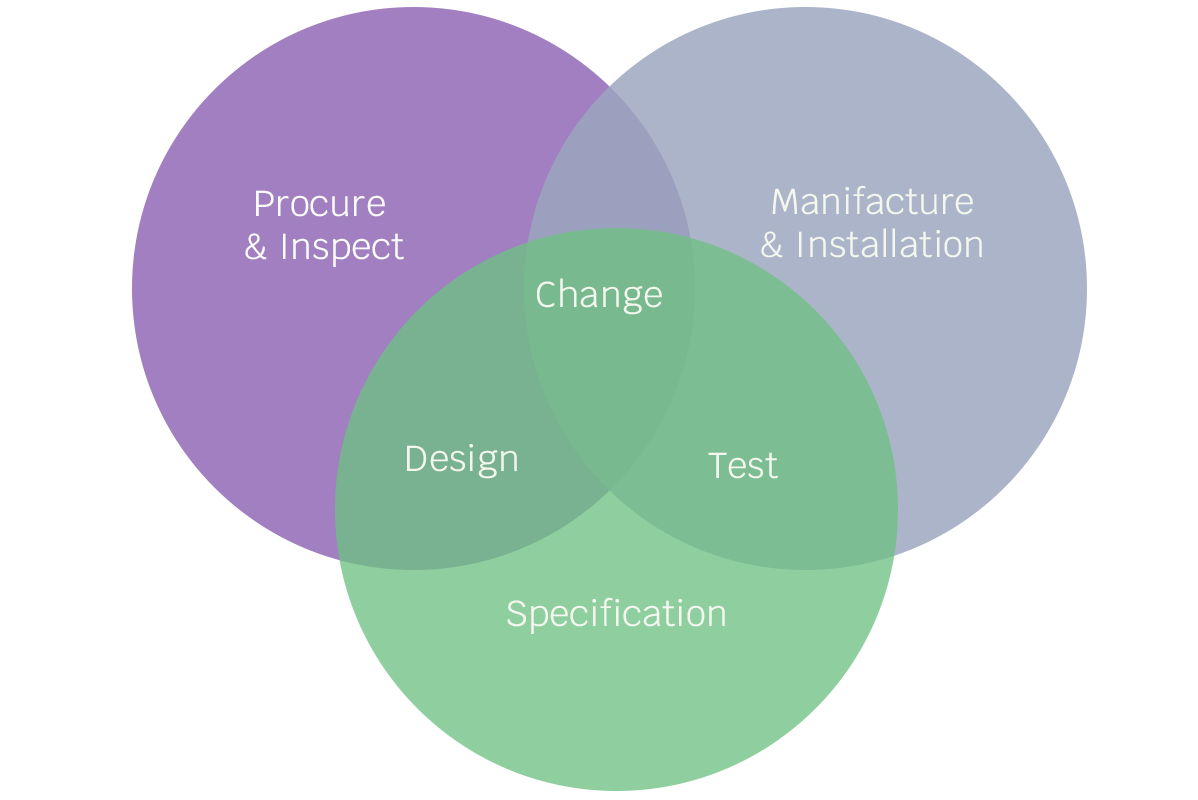Digital Engineering, bespoke platforms, fit for purpose… compliant with the ISO 19650 series
The maturity of information management is dependent on four primary interactive layers, namely:
- Owner-Operator/Business layer: the need;
- Information layer: the vehicle, the conduits that solve the need;
- Technology layer: tools, frameworks, IT systems, to produce, capture and audit the quality of the information;
- Standards layer: ways of working the rules for how the technology layer will function.
The stages of Information management maturity can be summarised as:
Stage 1
Stage 2
Stage 3
ALIM Systems digital engineering solutions are tailored for infrastructure asset system projects, according to ISO 19650 and to establish information management maturity Stage 3, our product range includes;
Common Data Environment

Information management for any asset system project, requires a CDE to:
- Enhance collaboration: Digital technologies improve collaboration, if used correctly. Effective for the sharing of asset information needed by all actors, to flow into and be updated in one centralized system;
- Create a single source of truth: One reliable place for actors to access real-time plans, changes, and data to facilitate decision-making and improve insight across the asset lifecycle;
- Increase efficiency and quality: CDEs decrease the need to manually recreate data, reducing the risk of input errors and lost information;
- Lower risk: A CDE reduces risk by providing transparency and knowledge into the entire asset landscape;
- Strengthens security: With a CDE, administrators have better control of data and information, can more effectively manage access permissions and can be assured of traceability.
Our CDE attributes:
- Ease of Use: User experience is an essential component of a CDE, to be effective, it needs to be intuitive with minimal training to get actors working in the system;
- Accessible: Cloud-based means access is open (with adequate controls) to actors who need the information whether they are on site or working remotely;
- Integrated: The goal is to break down silos and encourage overall communication;
- Standardized and Scalable: A CDE should allow businesses to standardize workflows and processes that can be adapted for a range of projects sizes and differing complexities.
- Secure: In a well-functioning CDE where data is never compromised and is safe for confidential business documents and information.

ALIM enabled Common Data Environment

Information Management for an asset system merits special attention due to its complexity, operational criticality and far-reaching lifecycle obligations. Bridging multiple businesses, engineering management siloes and specialised process tools (RAMS, Safety Assurance, Configuration Management etc), it benefits from administrating an information container-based collaborative working solution.
Each information container has its own level of information needs and format requirements, common framework, possesses and partner tools. These are determined by the hierarchical project management, systems-engineering or asset management standards, for actors to perform risk-based and evidence-based decision-making, throughout the asset lifecycle phases.

DMITS

DMITS (design, manufacture, installation, test & supply) is our component information management system developed for asset system projects
DMITS has been developed to correlate and consolidate design-generated materials requirements with component detail at the earliest possible stage in a project life-cycle. The system is unique in accepting and reacting accurately to both top-down and bottom-up information. It functions as a mitigation against late procurement of long lead-time elements and as a control mechanism against over spending and wastage. As the project moves through its detailed design, build, testing and commissioning phases, the system can be continually updated to provide an accurate as-built list of all components for handover to the operator and maintainer of the completed system.
The system structure allows for the retention of original supply chain data, alternative replacement options for components that may later become unavailable, final installation positioning, technical data and servicing recommendations and can produce the data required to satisfy the requirements of BS 1922-4 and the COBie system.
ADS-DOC Document Management
ADS-Doc is proven platform for document management and digital archival. Operations like document acquisition have been fully automated by leveraging technologies like OCR, barcode/datamatrix/ QR Codes decoding and Automatic Document Recognition (ADR) resulting in considerable time savings, increased data reliability and improved efficiency. Integration and Scheduled processes allow the acquisition of documents directly from their originating back-end systems together with their metadata.
Documents can be easily accessed through a wide array of functions, including both windows-based and web clients as well as iOS (iPad) and Android Apps to provide accessibility anytime, anywhere. Structured processes for long term digital preservations are provided to ensure dependable archiving strategies and savings in document storage costs.
ADS-Doc is a product developed by AD System Asia and AD System Italia. To find out more, click here

